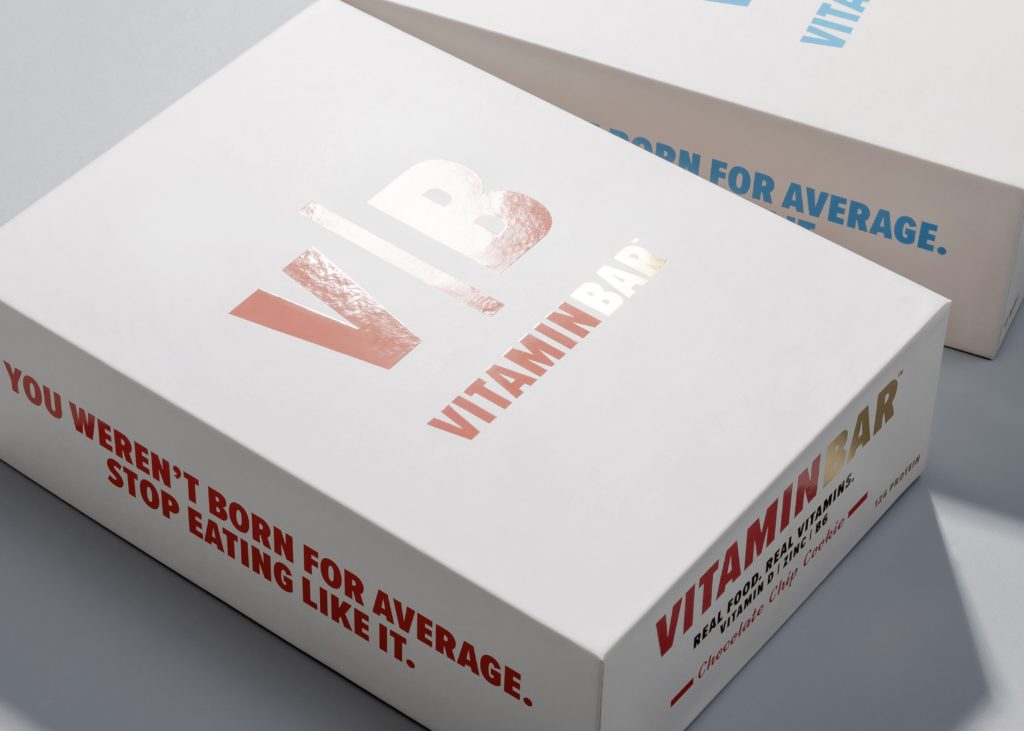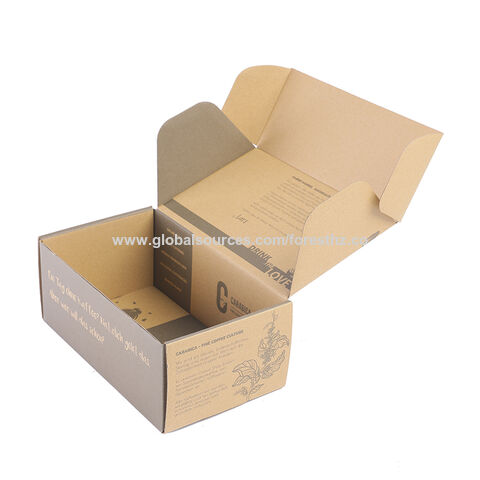Is Offset Paper Packaging Eco-Friendly?
Offset Paper Packaging
Section 1: Understanding Offset Paper Packaging
Offset paper packaging is a popular choice in the printing industry due to its versatility, high-quality output, and cost-effectiveness for large quantities. In this section, we will delve into what offset paper packaging is, how it differs from other packaging materials, and the properties that make it suitable for various packaging applications.
What is offset paper packaging?
Offset paper packaging refers to the use of offset printing technology on paper-based materials, such as folding cartons and rigid boxes, to create high-quality packaging. Offset printing utilizes metal plates to transfer ink onto a rubber blanket before finally printing it onto the packaging material. This process allows for precise color reproduction, excellent detail, and customization options like embossing, debossing, and foil stamping.
How does offset paper packaging differ from other packaging materials?
While there are various packaging materials available, offset paper packaging offers unique advantages. Unlike digital printing, which is suitable for low-volume jobs with quick turnaround times, offset printing is preferred for large quantities and intricate designs. Offset printing outperforms digital printing in terms of color depth, brightness, and color fidelity. With the Pantone Matching System (PMS), offset printing ensures accurate color matching, making it ideal for brands that require precise branding and packaging consistency.
What are the properties that make offset paper packaging suitable for packaging applications?
Offset paper packaging possesses several properties that make it suitable for a wide range of packaging applications. Firstly, offset printing offers superior image quality, resulting in clearer and more vibrant output compared to digital printing. This makes it an excellent choice for packaging that requires intricate designs or high-resolution images.
Furthermore, offset printing allows for the application of various finishes and coatings, such as varnish or UV coating, to enhance the appearance and durability of the packaging. These finishes not only provide visual appeal but also protect the packaging from scratches and fading.
Additionally, offset paper packaging offers versatility in terms of color options. Along with the standard CMYK color system, offset printing enables the use of Pantone colors, gradients, and metallic inks. This versatility allows brands to achieve their desired color schemes and create packaging that stands out in the market.
Lastly, offset paper packaging is a cost-effective choice for businesses that require large print runs. The unit costs of offset printing decrease as the print quantity increases, making it an ideal option for brands that need to produce a high volume of packaging. Furthermore, offset printing allows for the use of eco-friendly inks and recycled paper options, catering to the growing demand for sustainable packaging solutions.
In conclusion, offset paper packaging is a versatile and cost-effective solution for businesses in the printing industry. Its high-quality output, customization options, and compatibility with large print quantities make it an attractive choice for brands that wish to create visually appealing and durable packaging. By understanding the properties and advantages of offset paper packaging, businesses can make informed decisions when choosing their packaging materials.
Benefits and Uses of Offset Paper Packaging
Offset paper packaging offers several benefits that make it a popular choice in the printing industry. From superior image quality to cost-effectiveness for large volumes, offset paper packaging holds its own against other printing methods like digital printing. In this section, we will explore the advantages of offset paper packaging and its common uses.
Benefits of Using Offset Paper Packaging
- Superior Image Quality: Offset printing utilizes metal plates to layer colors onto paperboard, resulting in high-resolution and detailed images. The clarity, brightness, and color depth achieved through offset printing are unmatched, making it the preferred choice for packaging that requires fine details and vibrant colors.
- Customization Options: Offset printing allows for a wide range of customization options. Unique finishes such as embossing, debossing, and foil stamping can be applied to enhance the packaging’s appearance and create a memorable unboxing experience for customers. Special coatings like varnish or UV coating can also be applied for added durability and visual appeal.
- Accurate Color Matching: Offset printing utilizes the Pantone Matching System (PMS), which ensures precise color reproduction. This is especially crucial for brand consistency and maintaining a cohesive visual identity across different packaging materials. The use of PMS colors allows for accurate color matching, ensuring that your brand colors are reproduced accurately.
- Cost-Effectiveness for Large Quantities: Offset printing is highly cost-effective for large print runs. While the setup costs may be higher compared to digital printing, the unit costs decrease significantly as the print quantity increases. This makes offset printing an ideal choice for businesses that require packaging in bulk.
- Wide Range of Coating Options: Offset printing offers more coating options compared to digital printing. From glossy to matte finishes, varnishes, and special effects coatings, offset printing allows you to choose the coating that best suits your packaging design and brand image.
Common Uses of Offset Paper Packaging in the Printing Industry
- Folding Cartons: Folding cartons are widely used in industries such as retail, pharmaceuticals, cosmetics, and fancy goods. The rigidity, flexibility, and customization options of offset paper packaging make it the preferred choice for folding cartons. Offset printing ensures high-quality images, vibrant colors, and fine details, making it suitable for intricate designs.
- Rigid Boxes: Offset paper packaging is commonly used for rigid boxes that require clearer and more vivid output. Rigid boxes are often used for luxury packaging, high-end products, gift sets, and premium items. Offset printing allows for customization with unique finishes and enhances the perceived value of the products.
- Prototyping: Offset printing can be used for prototyping packaging designs. While it may require more time and cost compared to digital printing, offset printing offers a higher-quality output and can be a cost-effective solution for producing prototypes before full-scale production. Combining digital and offset printing can provide a cost-effective balance between quality and affordability for prototyping.
- Other Packaging Applications: Offset paper packaging is not limited to folding cartons and rigid boxes. It can also be used for various other packaging applications such as labels, sleeves, inserts, and promotional materials. The versatility of offset printing allows for customization and precision in these applications.
Offset Paper Packaging vs. Digital Printing in Terms of Benefits and Applications
While both offset paper packaging and digital printing have their advantages, they differ in terms of benefits and applications.
- Turnaround Time: Digital printing offers a quick turnaround time, making it suitable for small-scale or time-sensitive projects. Offset printing, on the other hand, may require more time for setup and printing, but it excels in terms of quality and consistency for larger quantities.
- Color Fidelity: Offset printing outperforms digital printing in terms of color fidelity. It can replicate Pantone colors accurately and offers a wider range of color options. Digital printing is limited in terms of color accuracy, especially when it comes to reproducing specific Pantone colors.
- Suitability for Small Runs: Digital printing is often recommended for smaller print runs due to its cost-effectiveness for low volumes. It eliminates the need for expensive setup costs associated with offset printing. However, as the quantity increases, offset printing becomes more cost-effective.
- Complexity of Designs: Offset printing is well-suited for intricate and complex designs that require high image quality and fine details. Digital printing may struggle to achieve the same level of sharpness and crispness in highly detailed designs.
In conclusion, offset paper packaging offers numerous benefits and applications in the printing industry. Its superior image quality, customization options, accurate color matching, cost-effectiveness for large quantities, and wide range of coating options make it an excellent choice for packaging needs. Offset printing is commonly used for folding cartons, rigid boxes, and various other packaging applications. While digital printing has its advantages in terms of quick turnaround time and suitability for small runs, offset printing excels in terms of color fidelity, complexity of designs, and cost-effectiveness for larger quantities.
Suppliers and Manufacturers of Offset Paper Packaging
Where can businesses find reliable suppliers of offset paper packaging?
When searching for reliable suppliers of offset paper packaging, businesses have several options to consider. Here are some ways to find trustworthy suppliers:
- Trade shows and exhibitions: Attending trade shows and exhibitions related to the packaging industry is a great way to connect with suppliers. These events often feature numerous exhibitors showcasing their products and services, providing businesses with the opportunity to establish direct contact and evaluate different suppliers.
- Industry directories and online platforms: Utilizing industry-specific directories and online platforms can help businesses find a wide range of suppliers for offset paper packaging. These directories often provide comprehensive information about each supplier, including contact details, product offerings, and customer reviews. Some popular directories and platforms include Packaging World, Thomasnet, and Alibaba.
- Networking and referrals: Networking with industry professionals and seeking referrals from business partners or colleagues can be an effective way to find reliable suppliers. By reaching out to trusted connections, businesses can gain valuable insight and recommendations regarding suppliers they have had positive experiences with.
- Local print shops and packaging companies: Local print shops and packaging companies may offer offset paper packaging services or know reliable suppliers in the area. Consulting with these businesses can provide businesses with valuable information on where to find trusted suppliers.
What are the key factors to consider when choosing a manufacturer for offset paper packaging?
Choosing the right manufacturer for offset paper packaging is crucial to ensure the quality and reliability of the packaging materials. Here are some key factors to consider when evaluating manufacturers:
- Experience and expertise: Look for manufacturers with a proven track record in producing offset paper packaging. Consider their experience in the industry, the number of years they have been in business, and their expertise in manufacturing packaging materials.
- Quality control measures: A reputable manufacturer should have strict quality control measures in place to ensure the consistency and quality of their offset paper packaging. Inquire about their quality control procedures, certifications, and any testing they conduct to guarantee the products meet the required standards.
- Production capabilities: Assess the manufacturer’s production capabilities to determine if they can meet your business’s volume and timeline requirements. Consider factors such as production capacity, lead times, and flexibility in accommodating different order sizes.
- Sustainability practices: In today’s environmentally conscious world, it is essential to choose a manufacturer that prioritizes sustainability. Inquire about their sustainability practices, such as their use of eco-friendly materials, waste reduction initiatives, and certifications such as FSC (Forest Stewardship Council) or SFI (Sustainable Forestry Initiative).
- Cost considerations: While cost should not be the sole determining factor, it is important to evaluate the manufacturer’s pricing structure. Obtain quotes from multiple manufacturers and compare them based on the quality, services offered, and the ability to meet your specific requirements.
- References and customer reviews: Request references from the manufacturer and reach out to their current or past customers to gather feedback on their experience. Online reviews and testimonials can also provide valuable insights into the manufacturer’s reputation and the satisfaction of their customers.
How can businesses ensure the quality and sustainability of offset paper packaging from suppliers?
Ensuring the quality and sustainability of offset paper packaging from suppliers requires careful consideration and evaluation. Here are some steps businesses can take to ensure they are working with reputable suppliers:
- Supplier qualification process: Implement a thorough supplier qualification process that includes evaluating the supplier’s quality management system, certifications, and sustainability practices. This process should involve requesting documentation and conducting on-site audits if necessary.
- Sample testing: Request samples of the offset paper packaging from potential suppliers to assess the quality and suitability for your specific requirements. Conduct tests to evaluate factors such as durability, print quality, and adherence to environmental standards.
- Supplier performance monitoring: Establish key performance indicators (KPIs) to track and evaluate the supplier’s performance over time. Regularly assess factors such as on-time delivery, product quality, and responsiveness to any issues or concerns raised.
- Sustainability certifications and practices: Verify that the supplier adheres to recognized sustainability certifications and practices. Look for certifications such as FSC or SFI, which ensure that the paper used in the packaging materials comes from responsibly managed forests.
- Transparent supply chain: Request information from the supplier about their supply chain practices, including the source of the paper used for offset packaging. Transparency in the supply chain can help ensure ethical and sustainable practices are followed throughout the production process.
- Periodic audits: Conduct periodic audits of the supplier’s facilities to assess compliance with quality and sustainability standards. These audits can help identify any deviations from agreed-upon practices and allow for necessary corrective actions to be taken.
By following these steps, businesses can establish a strong relationship with reliable suppliers who provide high-quality and sustainable offset paper packaging materials. This ensures that businesses can meet their packaging needs while upholding their commitment to quality and sustainability.
Table 1: Comparison of Offset Paper Packaging and Digital Printing
| Criteria | Offset Paper Packaging | Digital Printing |
|---|---|---|
| Turnaround Time | Longer | Shorter |
| Color Fidelity | High | Limited |
| Suitability for Runs | Large quantities | Small quantities |
| Complexity of Designs | Well-suited | Limited |
Table 2: Key Factors to Consider when Choosing a Manufacturer for Offset Paper Packaging
| Key Factors | Description |
|---|---|
| Experience and Expertise | Look for manufacturers with a proven track record in producing offset paper packaging. |
| Quality Control Measures | Inquire about their quality control procedures, certifications, and any testing they conduct. |
| Production Capabilities | Assess the manufacturer’s production capabilities to determine if they can meet your requirements. |
| Sustainability Practices | Inquire about their sustainability practices, such as their use of eco-friendly materials. |
| Cost Considerations | Evaluate the manufacturer’s pricing structure based on the quality, services offered, and requirements. |
| References and Customer Reviews | Request references from the manufacturer and gather feedback from their customers. |
FAQs about Offset Paper Packaging
What is offset paper packaging?
To define offset paper packaging, it refers to the use of offset printing technology on paper-based materials to create high-quality packaging, utilizing metal plates for precise color reproduction and customization options like embossing and foil stamping.
How does offset paper packaging differ from other packaging materials?
In terms of how offset paper packaging differs from other materials, it excels in color depth, brightness, and fidelity compared to digital printing, making it ideal for large volumes and intricate designs.
What are the properties that make offset paper packaging suitable for packaging applications?
The properties of offset paper packaging that make it suitable include superior image quality, the ability to apply various finishes and coatings for durability, versatility in color options, and cost-effectiveness for large print runs.
Where can businesses find reliable suppliers of offset paper packaging?
For businesses seeking suppliers, options include trade shows, industry directories, online platforms, networking for referrals, and consulting with local print shops and packaging companies.
What are the key factors to consider when choosing a manufacturer for offset paper packaging?
When choosing a manufacturer, consider factors like experience, quality control measures, production capabilities, sustainability practices, cost considerations, and references or customer reviews to ensure the quality and reliability of the packaging materials.
In conclusion, Offset Paper Packaging offers versatile benefits and applications for businesses. Its distinctive properties make it a superior choice compared to other packaging materials. When seeking suppliers, consider factors like quality and sustainability to ensure a reliable partnership. The printing industry widely embraces the practicality of offset paper packaging over digital options. Harnessing the advantages of offset paper packaging can elevate packaging solutions and streamline operations effectively.





